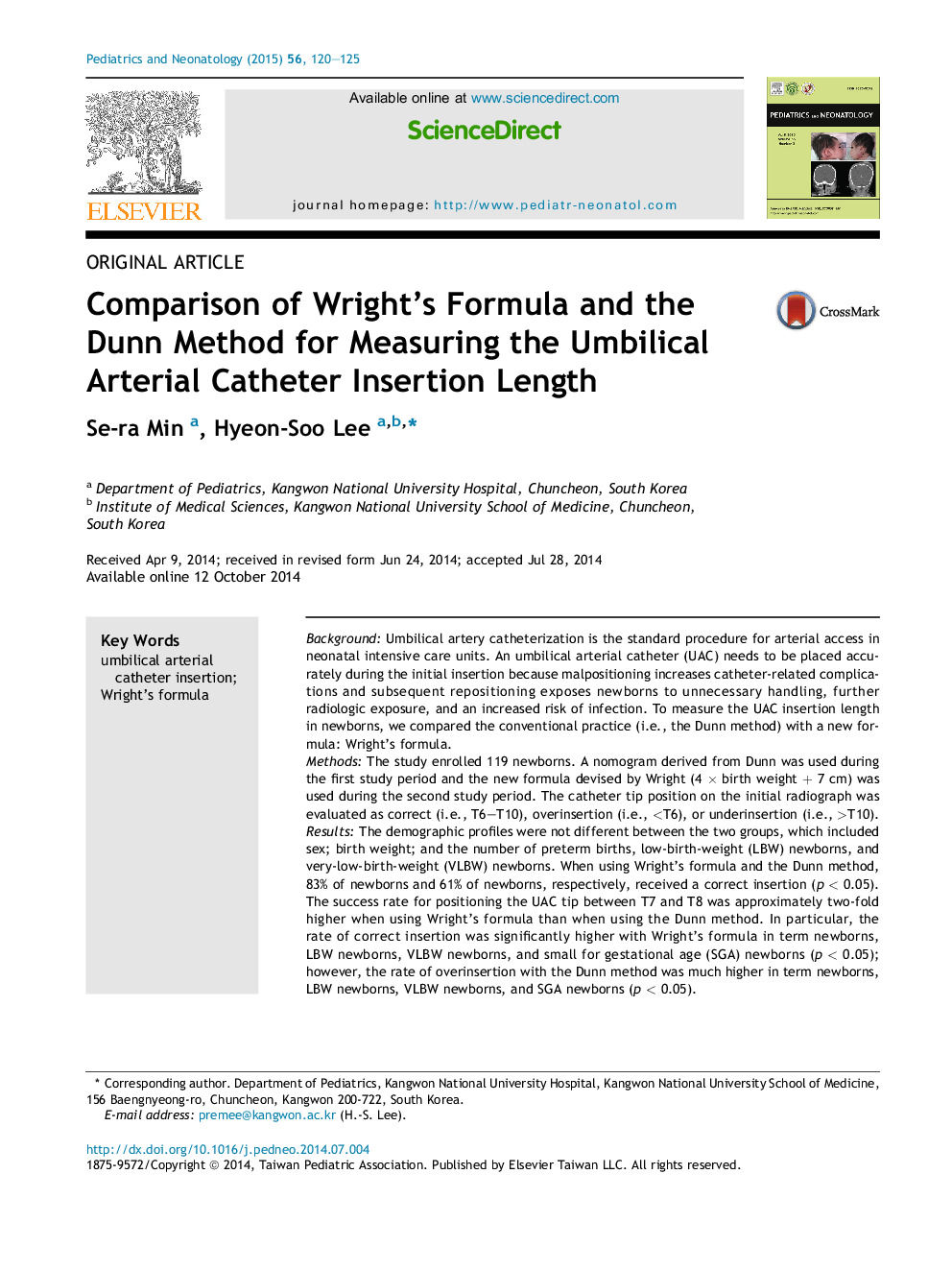| Article ID | Journal | Published Year | Pages | File Type |
|---|---|---|---|---|
| 4175054 | Pediatrics & Neonatology | 2015 | 6 Pages |
BackgroundUmbilical artery catheterization is the standard procedure for arterial access in neonatal intensive care units. An umbilical arterial catheter (UAC) needs to be placed accurately during the initial insertion because malpositioning increases catheter-related complications and subsequent repositioning exposes newborns to unnecessary handling, further radiologic exposure, and an increased risk of infection. To measure the UAC insertion length in newborns, we compared the conventional practice (i.e., the Dunn method) with a new formula: Wright's formula.MethodsThe study enrolled 119 newborns. A nomogram derived from Dunn was used during the first study period and the new formula devised by Wright (4 × birth weight + 7 cm) was used during the second study period. The catheter tip position on the initial radiograph was evaluated as correct (i.e., T6–T10), overinsertion (i.e.,
